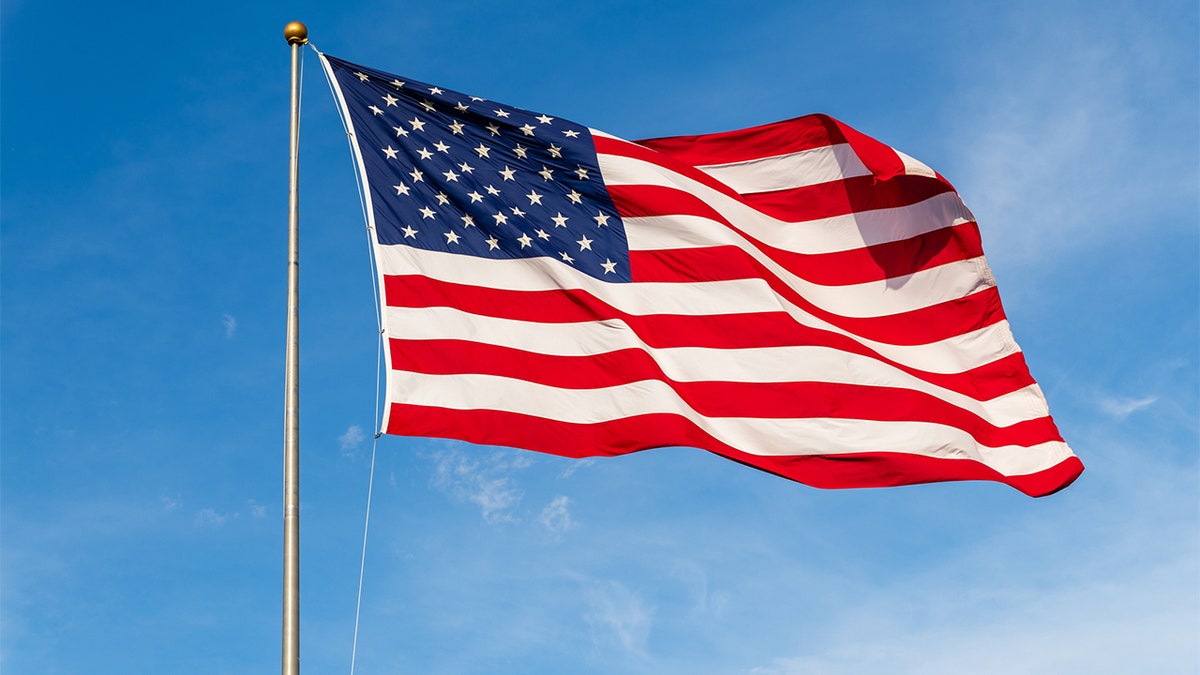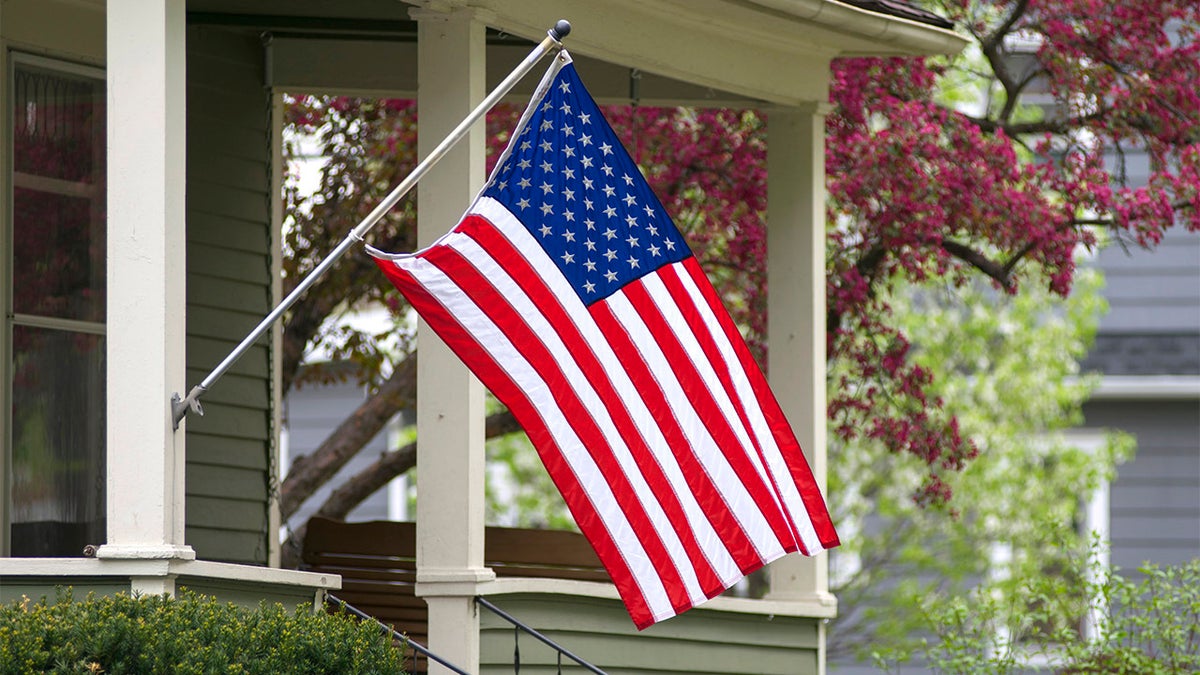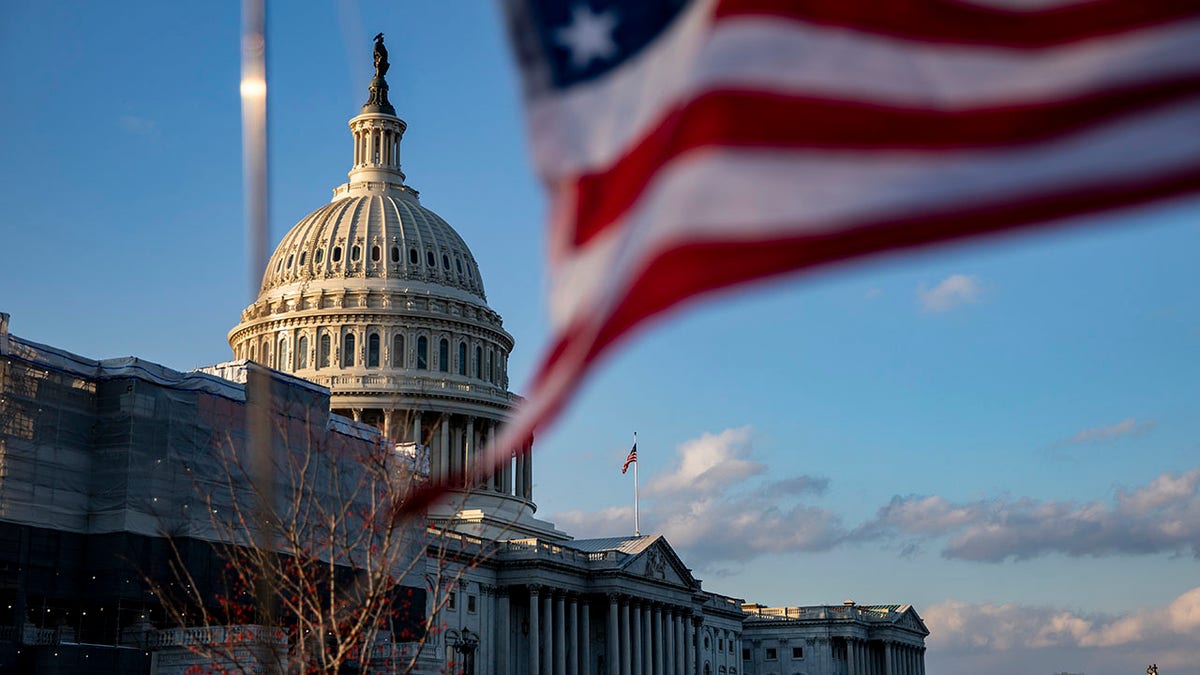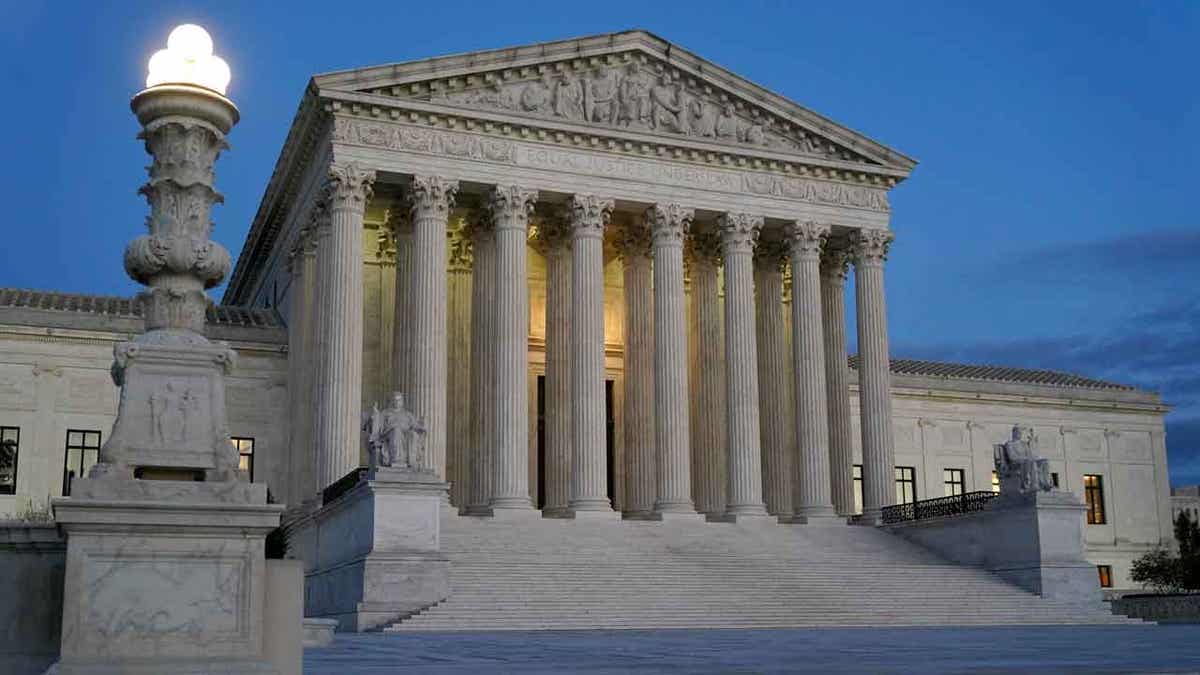Indiana man paints American flag mural on roof of hardware store
Adam Long describes the patriotic project that took him two weeks to complete.
The U.S. flag was adopted on this day in history, June 14, 1777 — a day that would become known as "Flag Day" more than a century later.
A symbol of freedom to many throughout history, the American flag was the result of a resolution adopted by the Marine Committee of the Second Continental Congress at Philadelphia, according to the website for the Department of Veterans Affairs.
The text of the resolution stated "that the flag of the United States shall be of thirteen stripes of alternate red and white, with a union of thirteen stars of white in a blue field, representing the new constellation."
This flag was first used in battle on Sept. 11, 1777, during the Battle of the Brandywine, said the VA website.
"The American flag was first saluted by foreign naval vessels on Feb. 14, 1778, when the Ranger, bearing the Stars and Stripes and under the command of Captain Paul Jones, arrived in a French port," said the site.
"The flag first flew over a foreign territory in early 1778 at Nassau, Bahama Islands, where Americans captured a British fort."

The American flag now has 50 stars, one for each of the 50 states. The original flag, adopted on this day in history, 1777, only had 13 stars. (iStock)
The flag adopted on June 14, 1777, replaced the "Grand Union Flag," the first-ever national flag of what would become the United States, notes Encyclopedia Britannica.
The Grand Union Flag featured the same 13 alternating red and white stripes as the current U.S. flag; but instead of the blue field of stars in the canton, the flag had a small British Union Flag of 1606.
Since the adoption of the "Stars and Stripes" flag, the design has undergone many changes. There have been a total of 27 official versions of the American flag, says the Smithsonian Institution.
FLAG DAY IS A PATRIOTIC SPECTACLE IN THESE ALL-AMERICAN COMMUNITIES
An additional two stars (and two stripes) were added to the flag in 1795, following the admission of Vermont (1791) and Kentucky (1729) to the United States.
In 1818, the 20-star flag made its debut, but by 1819 the field grew to 21 and then to 23 on July 4, 1820.
In 1818, Congress decided that the number of stripes was to be reduced back to the original 13, and a new star would be added to the flag for each new state on July 4 the year after its admission to the union, said the Smithsonian.

The current version of the U.S. flag was officially adopted on July 4, 1960, almost one year after Hawaii was admitted to the United States. (iStock)
The present 50-star flag was officially adopted on July 4, 1960, nearly a year after Hawaii became the 50th state on Aug. 21, 1959, noted the museum.
While the U.S. flag was adopted in 1777, it was not until June 24, 1912, that the actual design of the flag was codified.
On this date, President William Howard Taft issued an executive order clarifying the proportions of the flag, the arrangement of the stars and the direction the stars, said the Smithsonian.
"Until the Executive Order of June 24, 1912, neither the order of the stars nor the proportions of the flag was prescribed," the Smithsonian said.
The shape of the star was also left unclear.
In honor of the flag's adoption, June 14 of each year is known as "Flag Day."
"Consequently, flags dating before this period sometimes show unusual arrangements of the stars and odd proportions, these features being left to the discretion of the flag maker. In general, however, straight rows of stars and proportions similar to those later adopted officially were used," said the museum.
ON THIS DAY IN HISTORY, AUGUST 10, 1776, DECLARATION OF INDEPENDENCE REACHES LONDON
In honor of the flag's adoption, June 14 of each year is known as "Flag Day."
The first Flag Day celebrations reportedly occurred in the 1860s in Connecticut, said the Veterans Affairs website. These sporadic observances continued throughout the 19th century.

Flag Day became an official holiday in 1949, more than a century-and-a-half after the U.S. flag was adopted. (Samuel Corum/Getty Images)
In the 1880s, a schoolteacher from Waubeka, Wisconsin, named Bernard J. Cigrand attempted, and failed, to get Congress to declare Flag Day a national holiday.
"Although his attempts failed, the day was widely observed," said the Smithsonian — and Cigrand is one of a handful of individuals who have been regarded as "the Father of Flag Day."
Seventeen years after Cigrand's death in 1932, President Harry S. Truman made his wish come true.
On Aug. 3, 1949, President Truman signed into law a bill that declared June 14 as "Flag Day," said Veterans Affairs.
The American flag has served as a symbol of freedom and perseverance — as well as a flashpoint for those angry with America, her own citizens or otherwise.
Many see the flag as the ultimate symbol of pride and patriotism — and of the uniqueness of America.
On June 21, 1989, a "deeply divided" United States Supreme Court "upheld the rights of protesters to burn the American flag in a landmark First Amendment decision," said the Constitution Center.
It was referencing the Texas v. Johnson case, in which the Supreme Court voted 5-4 in favor of Gregory Lee Johnson, a protester who burned an American flag.

On June 21, 1989, a "deeply divided" U.S. Supreme Court "upheld the rights of protesters to burn the American flag in a landmark First Amendment decision." (AP Photo/Patrick Semansky, File)
Johnson’s actions "were symbolic speech, political in nature, and could be expressed even at the expense of our national symbol and to the affront of those who disagreed with him," the majority opinion wrote.
For more Lifestyle articles, visit www.foxnews.com/lifestyle
Still others see the flag as the ultimate symbol of pride and patriotism — and of the uniqueness of America.
CLICK HERE TO GET THE FOX NEWS APP
Of the American flag, President Woodrow Wilson said, according to Jesuit Research: It "has not been created by rhetorical sentences in declarations of independence and in bills of rights. It has been created by the experience of a great people, and nothing is written upon it that has not been written by their life. It is the embodiment, not of a sentiment, but of a history."
CLICK HERE TO SIGN UP FOR OUR LIFESTYLE NEWSLETTER
George Washington, our nation's first president, reportedly said, "We take the stars from heaven, the red from our mother country, separating it by white stripes, thus showing that we have separated from her, and the white stripes shall go down to posterity, representing our liberty."


